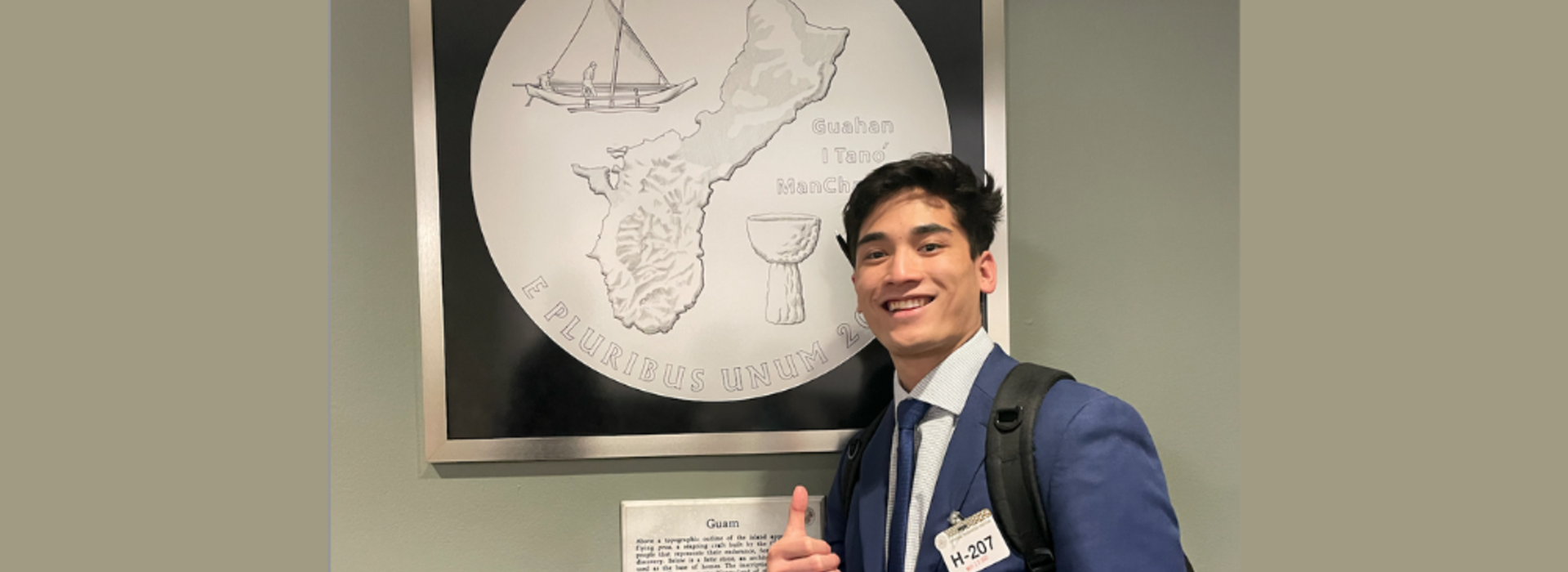
Improving Health at Home: Duluth Medical Student and Guam Native Kai Akimoto Works to Address Health Disparities Among Pacific Islanders
Improving Health at Home: Duluth Medical Student and Guam Native Kai Akimoto Works to Address Health Disparities Among Pacific Islanders
Akimoto is part of a team of researchers across the country working to disaggregate health data to better represent Native Hawaiian and Other Pacific Islanders.
Rising third year Duluth medical student Kai Akimoto didn’t fully understand the infrastructural healthcare inequalities in his home of Tamuning, a village in the U.S. island territory of Guam, until he came to Minnesota for college.
“It was always apparent to me that there was a general issue with access to healthcare,” he recalls. “But I was not sentient enough to really understand what the complexities of those issues were, whether it was purely medical or whether it was infrastructural.”
Now that he’s entering his third year of medical school, he understands that it’s a mix of both, and he’s working with a team of researchers to take steps toward solving the problem.
Connected to the work through friends from Guam who are also in medical school on the mainland, Akimoto is working with Native Hawaiian and Stanford resident physician Dr. Kekoa Taparra to overcome Native Hawaiian and Other Pacific Islander (NHOPI) erasure in medical demographic reporting.
“Pacific Islanders historically fall into the category ‘Asian American Pacific Islander,’ but the experiences and challenges of Pacific Islanders are very different from those that the Asian American population is facing in this country.”
Although the Office of Management and Budget issued a directive to the U.S. government in 1997 to disaggregate data into two separate categories, Asian Americans and NHOPI, the two are still sometimes grouped together, limiting the amount of reliable data on the challenges of NHOPI.
“When you disaggregate Pacific Islander data, you’ll find that there are these traditionally hidden phenomena,” Akimoto says. “And now that we are uncovering it, we can appropriate policy and funding in a manner that will help to rectify some of the challenges that we’re validating through these research efforts.”
One of the most significant findings in the team’s research was the rate of cancer among NHOPI. Generally, Asian Americans are associated with a lower cancer mortality risk, which does not tell the whole story for NHOPI. Not only were NHOPI cancer mortality rates different from those of Asian Americans, but NHOPI actually had the highest cancer mortality rate among young patients.
“This is reflected in our personal experiences,” Akimoto explains. “So many of us have family members who have battled with cancer and ultimately succumbed to it, so we’re glad to see this culminate in our findings.”
Looking to the future, Akimoto knows that there are many other health disparities for NHOPI that have not yet been discovered, and he hopes to be a part of identifying and solving the problems. Outside of his own clinical practice, Akimoto hopes to be involved in advocacy and policy to build a more vetted structure and institutionally endorsed system to facilitate stronger medical experiences. This starts, he believes, with medical training.
“We as Pacific Islanders are coming out to the mainland to do medical training, but by the end of our training, most of our professional career and experiences will not have been in the place we’re trying to practice,” he emphasizes. “We’d like to develop some training and away rotations in the Pacific Islands.”
His education at the Duluth campus, with its emphasis on rural health, is helping him better understand gaps in care and how he can work to address them as a practitioner.
“I want to have the skills and knowledge to help allay concerns and fears of patients, regardless of their concordance with my background,” he says. “But especially if I go back to Guam to practice, there’s a lot of these infrastructural and systemic burdens that patients will be encountering. The mission for me is to go back and be effective in delivering care to as many patients as I can.”